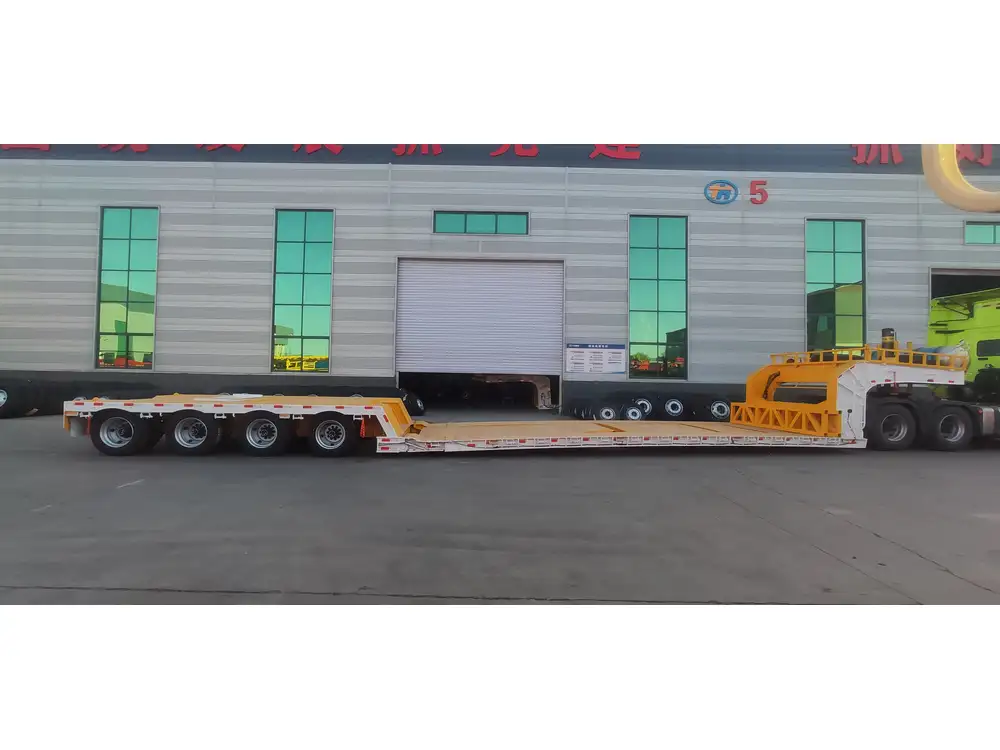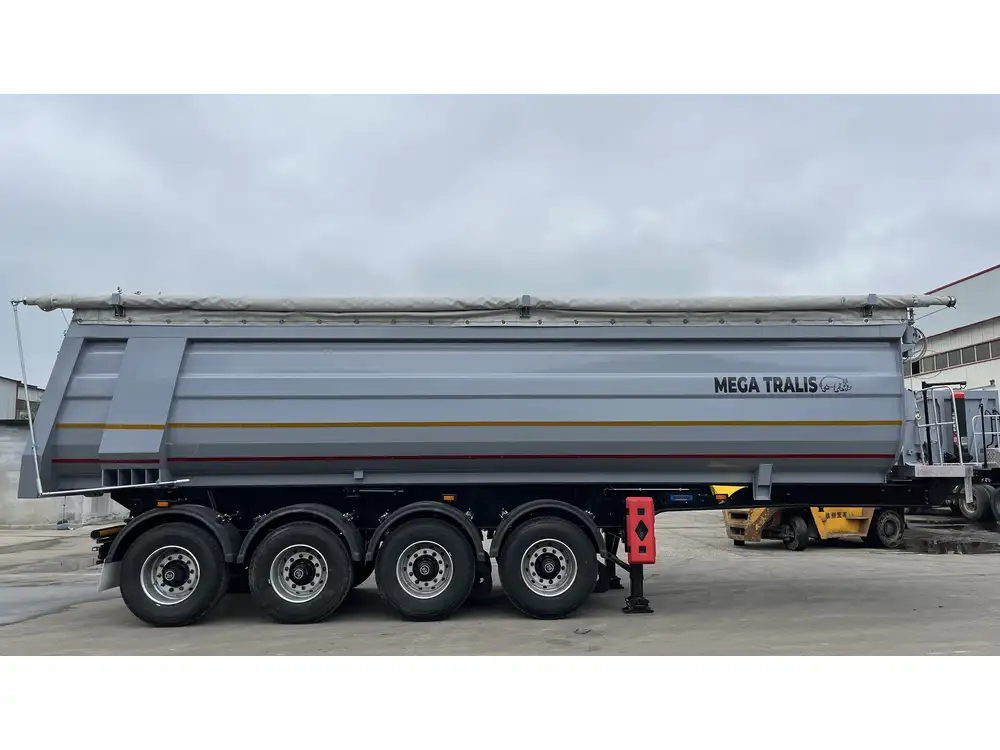Loading a travel trailer onto a flatbed trailer may seem like a straightforward task, yet it requires precision and understanding of both equipment and safety protocols. In this detailed guide, we will unravel the complexities involved in this process and provide you with a step-by-step breakdown to ensure an efficient and safe loading experience.
Understanding the Basics of Flatbed Trailers
What is a Flatbed Trailer?
A flatbed trailer is a type of trailer that has no sides or roof, allowing for versatile loading options. They are primarily used for transporting heavy equipment, vehicles, and other oversized items. The open design enhances accessibility, making it easy to load and unload cargo with different equipment.

Types of Flatbed Trailers
| Type | Description |
|---|---|
| Standard Flatbed | Basic design without any modifications. |
| Tilt Bed | Equipped with a tilting feature for easy loading. |
| Drop Deck | Lowered deck height for taller loads. |
| Step Deck | Features a lower deck in the rear. |
Preparing to Load Your Travel Trailer
Assess Your Equipment
Before attempting to load, inspect both the travel and flatbed trailers:
Flatbed Trailer:
- Verify weight limit specifications.
- Ensure ramps are secure and intact (if using a ramp).
- Check for rust or damage that may affect load capacity.
Travel Trailer:
- Confirm that your trailer is roadworthy.
- Inspect tires for proper inflation and wear.
- Disconnect any wiring, such as brake lights or electric brakes.

Ideal Tow Vehicle Assessment
While flatbed trailers provide a stable base, towing requires a capable vehicle. Here’s a concise checklist:
- Weight Capacity: Ensure your tow vehicle can handle the combined weight of the flatbed trailer and travel trailer.
- Hitch Type: Use a compatible hitch that is rated for the total weight.
- Braking System: A reliable braking system is crucial, particularly for heavier loads.
Step-by-Step Guide to Loading a Travel Trailer on a Flatbed Trailer
Step 1: Position the Flatbed Trailer
Begin by situating the flatbed trailer on level ground, away from any obstacles:
- Adjust the height of the flatbed using the jack.
- Ensure that the trailer is parked with the tongue elevated slightly, facilitating the loading process.

Step 2: Use Proper Loading Gear
Safety gear and tools create a secure loading environment:
- Loading Ramps: Properly rated ramps are essential for a smooth load transition.
- Straps and Chains: Have heavy-duty tie-downs ready to secure the travel trailer.
- Wheel Chocks: Use chocks to prevent movement during loading.
Step 3: Align Your Vehicles
- Drive your travel trailer toward the flatbed trailer, ensuring a straight line.
- As you approach, watch for potential obstructions, both on the ground and at the loading point.
Step 4: Begin Loading the Trailer
Loading Procedures:
- If using ramps, position the ramps on the flatbed and align them with both the travel trailer and the flatbed.
- Gradually drive up the ramps at a slow pace, ensuring alignment and maintaining control.
- If using a winch system, securely attach the winch to the travel trailer’s frame before beginning the pulling process.
Monitoring:
- Maintain communication if there are multiple operators.
- Always utilize a spotter, especially if visibility is limited.

Step 5: Securing the Travel Trailer
Once loaded, securing your travel trailer is paramount:
Strapping Down:
- Use ratchet straps to firmly secure the trailer to the flatbed.
- Check and adjust the straps so that the travel trailer does not shift during transport.
Chain Tie-Downs:
- In addition to straps, chain tie-downs can offer extra security, especially for long-distance travel.
Step 6: Perform a Safety Check
Before hitting the road, ensure thorough checks are in place:
- Inspect tie-downs for any slack.
- Confirm that lights and signals on the travel trailer are functional.
- Double-check that all securing mechanisms are tight.
Common Mistakes to Avoid While Loading

Neglecting Weight Distribution
Improper weight distribution can lead to stability issues during transport. Aim for a balanced load by positioning the travel trailer centrally on the flatbed.
Overloading
Always adhere to the weight limit of both the flatbed trailer and tow vehicle. Overloading can cause significant safety risks.
Ignoring Road Conditions
Consider the route and road conditions prior to departure. Uneven or rugged roads can exacerbate loading errors and affect trailer stability.

FAQs on Loading a Travel Trailer on a Flatbed Trailer
What Size Flatbed Do I Need?
The law dictates maximum dimensions for hauling trailers. Common flatbed lengths are between 20 and 30 feet. Additionally, ensure enough width for the travel trailer.
Do I Need Special Permits?
For oversized loads, local regulations may require permits. Always check state laws concerning length, width, and weight limits before loading.

Can I Load a Travel Trailer by Myself?
While possible, it’s highly recommended to seek help for loading, given the potential risks and the size of the equipment involved.
Conclusion: Succeeding in Trailer Loading
By adhering to the guidelines outlined in this comprehensive article, you can confidently and safely load your travel trailer onto a flatbed trailer. This meticulous process emphasizes preparation, proper techniques, and safety measures, ensuring a smooth transition from ground to transport.
Final Safety Tips:
- Plan Your Route: Familiarize yourself with the path you plan to take to avoid sudden accidents.
- Weather Considerations: Never attempt to load your trailer in adverse weather conditions such as rain or snow, which can make surfaces slippery.
- Immediate Reinforcement: Always reinforce your loading setup as soon as possible to counteract any shifting or tilting that may occur.
With these steps and precautions, you are poised for success in transporting your travel trailer efficiently and safely. By combining thorough preparation with meticulous execution, you can navigate the loading process seamlessly, ensuring your equipment arrives safely at its destination. Safe travels!



